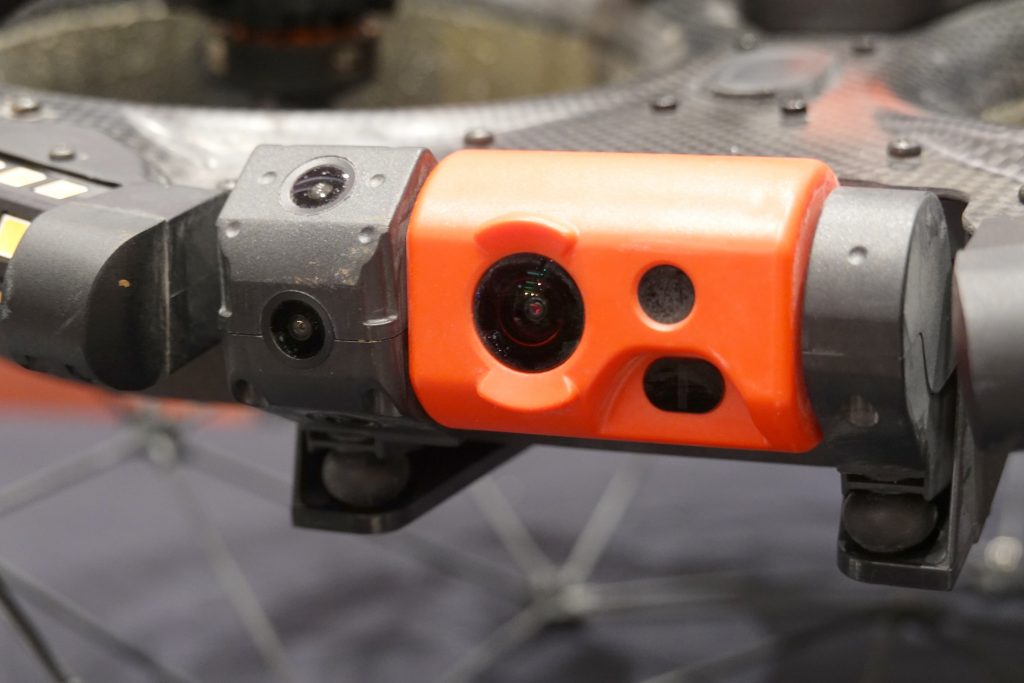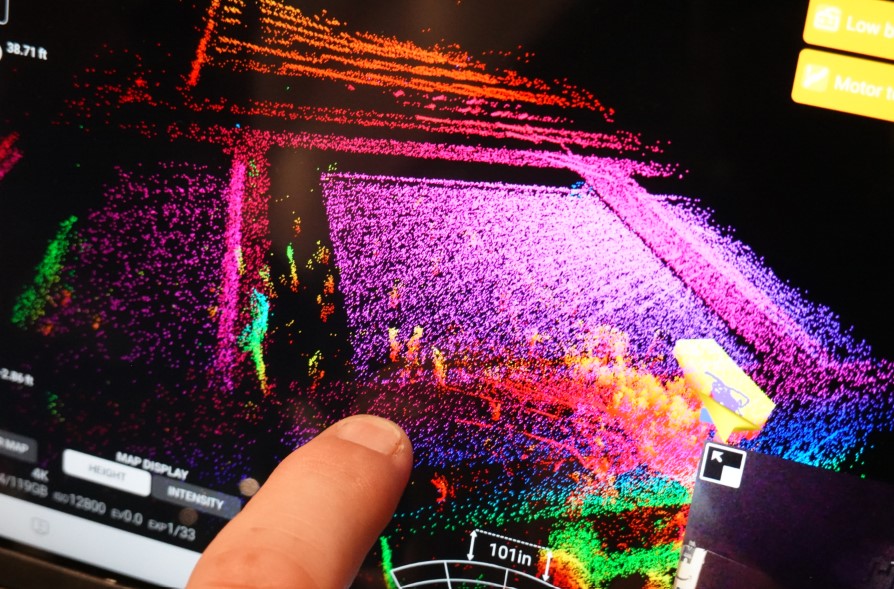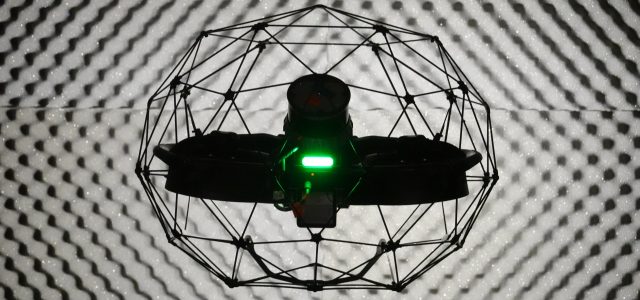Based in Switzerland, Flyability has been a dominant manufacturer of drones specialized for indoor and confined-space inspection since its original Elios took the $1 million prize in the United Arab Emirates’ “Drones for Good” competition in 2015. While it inaugurated an entirely new venue for drone operations, the original Elios was a handful for pilots.
To ensure that it could keep flying after brushing up against an obstacle or even maintaining physical contact with the surface of a structure, the fairly conventional quadcopter was enclosed within an entirely unconventional carbon-fiber cage, which could rotate around the aircraft in three axes. This unique configuration made it possible for the aircraft to “roll” along floors, ceilings and walls.
In the hands of a skilled pilot—a very skilled pilot—it could be invaluable for exploring and inspecting confined spaces like sewers, utility vaults, fuel bunkers, and so on. At the 2022 Commercial UAV Expo held in Las Vegas this past September, the company released the Elios 3.

Incorporating a LiDAR sensor, the Elios 3 from Flyability is able to construct a three-dimensional map of its surroundings in real time, both enhancing the pilot’s situational awareness and providing data for its on-board Simultaneous Localization And Mapping system.
While it superficially resembles the original Elios with its carbon-fiber cage, it is altogether a different aircraft. The cage is fixed, and its ability to stabilize after colliding with obstacles has been maintained through careful refinement of its flight control system, which is even capable of reversing the direction any of its four motors are turning, if that is what the circumstances require to maintain it in flight.
“The big change with the Elios 3 is that it incorporates a LiDAR sensor,” said company spokesperson Zacc Dukowitz, using the acronym that describes Light Detection and Ranging systems and which accomplishes the same basic task as radar, only using lasers.
“LiDAR allows the drone to create 3D models in real time, and then it uses SLAM—Simultaneous Localization And Mapping—so the drone can position itself in three-dimensional space,” Duckowitz explained. “SLAM also allows the drone to be incredibly stable: it uses three visual sensors as well as the LiDAR sensor to achieve what we call ‘world-class stability.’”
Having had the opportunity to operate the aircraft myself at the show, I can attest to its formidable station-keeping abilities. It’s about as steady in the air as a conventional drone from DJI or Autel Robotics—but that’s with zero GPS input. Unlike the original Elios, which required the pilot to manually manage the platform’s momentum and position, all while the protective cage was spinning crazily around it, the Elios 3 basically flies like a conventional drone—except in a cave.
Add to that the incredibly precise data that the LiDAR sensor is able to gather and the result is an entirely new capability for indoor inspections.
“We’re discovering new use cases all the time,” said Dukowitz. “LiDAR sensing on an aerial platform in a confined space sounds really niche, but there is actually a lot of potential. We’re seeing the drone used in mining. A client recently told me they had a clogged chute in their mine and they had spent two months trying to figure it out … in one ten-minute flight [with Elios 3] using the live, 3D map, they were not only able to identify the cause, but also determine that the efforts they had made during the previous two months were never going to work because the problem was fundamentally different than what they originally imagined.”

The Elios 3 from Flyability incorporates a non-stabilized one-axis gimbal at the front of the aircraft, which supports both a visible light and a thermal camera and provides an unimpeded 180-degree field of view, from zenith to nadir.
Another example Dukowitz described was the inspection of the inside of an oil-storage tank on an off-shore drilling platform. Previous iterations of the Elios had been used for this task, however a human inspector was sometimes still required to enter the tank, just to verify that the drone had examined its entire inner surface. However, with the LiDAR developing a 3D map in real time, it is easy to confirm that complete coverage has been obtained.
The combination of LiDAR and SLAM technologies has created the possibility of fully autonomous confined space mapping and inspection. The Elios 3 also incorporates an array of more conventional sensors, such as a 4K visible light camera and a thermal imaging camera—both of which have an unobstructed 180-degree field of view on a user-controllable pitch-axis gimbal.
To aid in the inspection of dark environments, the Elios 3 incorporates a 16,000-lumen lighting array, which has been designed so that it doesn’t directly shine on the dust and dirt that are inevitably stirred up the by the drone’s prop wash, providing for a clear view even in contaminated environments. Finally, the Elios 3 has been future-proofed with a modular payload bay, which allows another external sensor to be mounted alongside the LiDAR.

While operating in a cargo trailer at the Commercial UAV Expo 2022 in Las Vegas, the LiDAR sensor on board the Elios 3 managed to begin building a 3D map of the entire conference hall through the trailer’s doorway.
For all its capabilities, the aircraft is not without a few disadvantages—mostly stemming from the fact it must be able to fit through a standard-sized manhole cover. First, with the LiDAR sensor attached, it can only fly for nine minutes on a fully charged battery, which is actually an upgrade from the original Elios. Also, its small, fast-turning props emit an ear-splitting racket, requiring hearing protection for the operators.
BY PATRICK SHERMAN



















